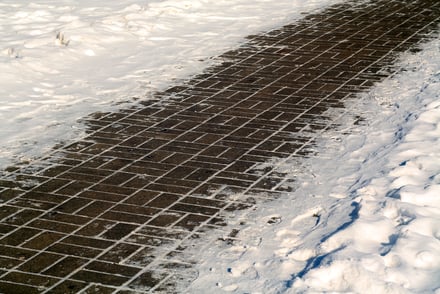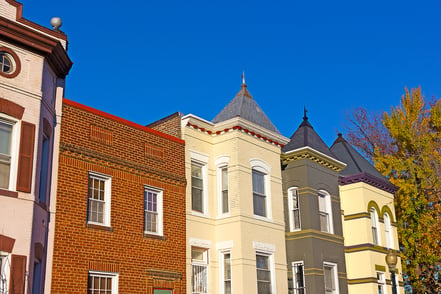When water pipes freeze in the cold weather, homeowners face multiple disasters. Aside from the inconvenience of turning on taps that produce no water, there is the potential for water damage to the interior if the pipes burst. Older homes found in historic neighborhoods may be particularly prone to damage and discomfort caused by frozen pipes.
Winter’s cold weather and icy mix can lead to home disasters for the even slightly unprepared homeowner. Here are some steps you can take to prevent frozen pipes and water damage:
Preparing Pipes for Winter Weather
Exterior Pipes.
If there is standing water inside a pipe that freezes, it can expand causing the pipe to break. Pipes that freeze are often exposed to the outside or are in unheated interior areas such as kitchen cabinets, attics, garages, basements and crawl spaces.
- Remove, drain and store garden hoses and close the inside valves, or bibs, that control the water supply to outside hose attachment.
- Shut the water off and empty exposed pipes before winter. Install a frost–proof hose bib in which the valve is located away from cold exterior air and angled downward to allow all the water to escape.
- Insulate exposed pipes located in vented crawlspaces and at exterior walls. Two types of insulation are available to mitigate the threat of frozen pipes - closed-cell sleeve insulation and heat tape. Wrap the heat tape between the exposed pipe and the sleeve insulation. The electric cable is temperature controlled and will be activated during a cold snap.
- Insulation, weather stripping and caulking that seals the interior from the exterior is the best way to prevent damage to plumbing from cold temperatures. If interior spaces remain drafty, wrap interior pipes with insulation or heat tape.
- During extreme cold periods you can let a trickle of water run through the pipes by turning on a faucet that is farthest from the main valve. If you notice a decrease in water pressure, run warm water to melt any ice that may be forming inside the pipes.
- If you go away for an extended time during cold weather, leave the temperature set above 55 degrees before you leave.
How to Deal With Frozen Pipes
When you have a frozen pipe there are two goals - get the water running and prevent the pipe from bursting. Here are some steps you should take:
- Shut off the main water supply valve. (It’s a good idea to locate this during the warm weather.)
- Turn on the water so that it will flow as the ice melts.
- Apply heat. Heat tape or a hair dryer will work.
- Have a bucket handy and check for any leaks.
Finally, if you are unable to locate or reach the frozen section or if these measures do not work, call a plumber.
Renaissance Development, a leader in brick restoration and historic preservation, is a specialist in Washington DC brick restoration and repair. For repairs on brick walkways and steps, patios and exterior walls, contact us.
Click to edit your new post...
Tags:
RepairJan 18, 2018 8:30:00 AM



